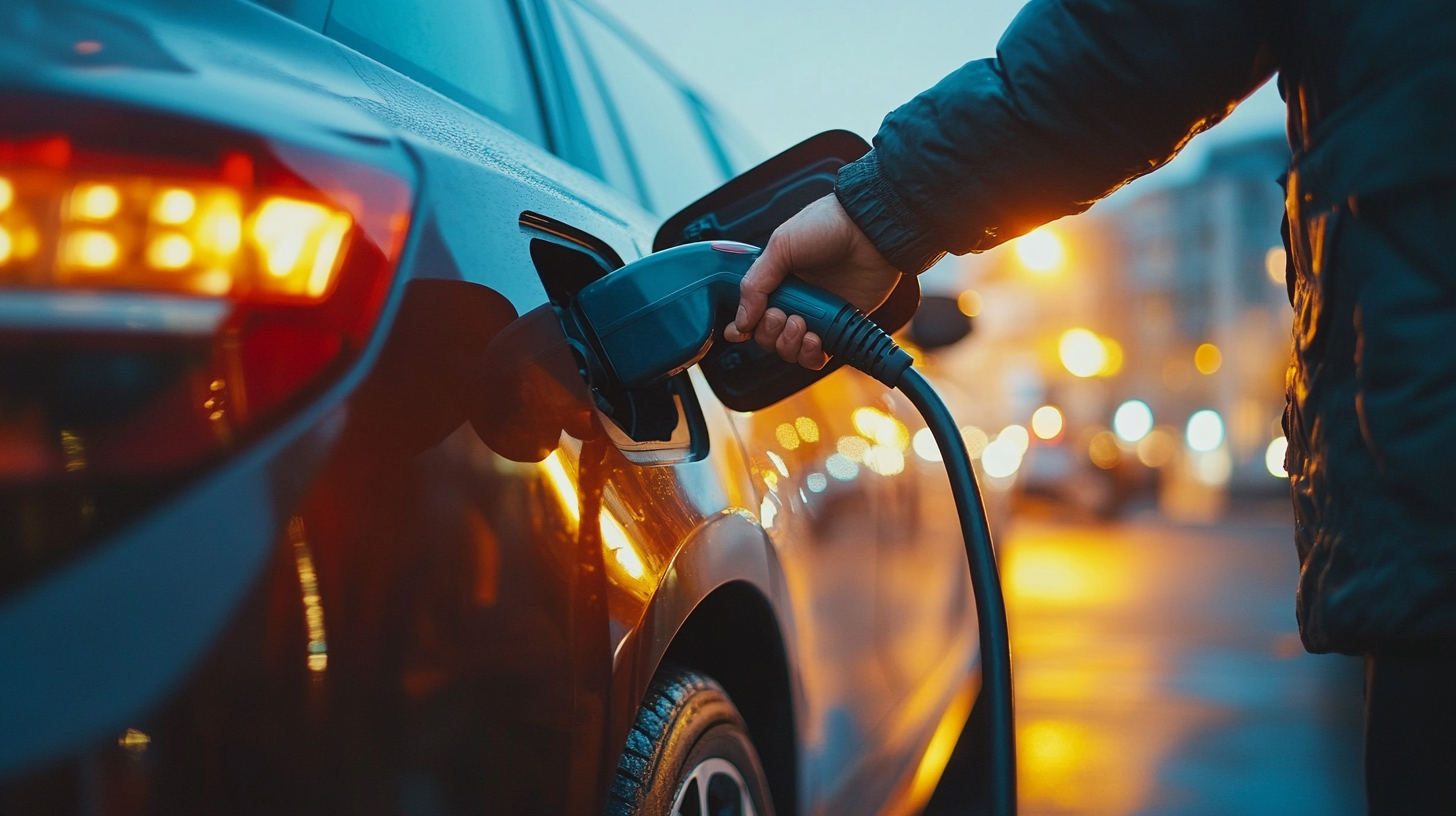Challenges in Sourcing the Right Car Battery for Your Global Supply Chain
In today's rapidly evolving automotive landscape, sourcing the right car battery has become a paramount concern for manufacturers and suppliers within the global supply chain. As electric vehicles (EVs) continue to gain traction, with projections indicating that global sales of EVs could reach 27 million units by 2030 (International Energy Agency, 2023), the demand for high-quality car batteries is at an all-time high. However, intricate supply chain dynamics, including fluctuating raw material costs and geopolitical factors, complicate the car battery purchase process, driving companies to rethink their sourcing strategies to ensure reliability and performance.
Additionally, according to a recent report by McKinsey & Company, the automotive industry is set to invest over $500 billion in battery technologies and production by 2030, highlighting the significant emphasis placed on car batteries as a critical component of modern vehicles. As businesses navigate these challenges, aligning battery sourcing with sustainability initiatives and technological advancements becomes increasingly vital. By understanding the complexities surrounding car battery purchase decisions, companies can better position themselves to respond to market demands, enhance operational efficiency, and foster long-term partnerships within their supply chains.

Understanding the Critical Role of Car Batteries in Global Supply Chains
In today’s increasingly interconnected global economy, car batteries play a crucial role in the automotive supply chain. As electric vehicles (EVs) gain traction, the demand for efficient and reliable batteries escalates. These power sources not only drive performance but also influence a vehicle's range, efficiency, and overall consumer satisfaction. Companies must navigate a complex landscape of battery types, suppliers, and geographic considerations to secure the right products. One significant challenge in sourcing car batteries lies in the diversity of technology and performance specifications available in the market. With advancements in lithium-ion and solid-state technologies, automotive manufacturers are faced with the task of selecting batteries that align with their strategic goals and vehicle designs. This necessitates deep technical understanding and close collaboration with suppliers to ensure that the sourced batteries meet both current and future demands. Furthermore, the global supply chain for car batteries is often hindered by geopolitical factors and regulatory challenges. Sourcing materials like lithium, cobalt, and nickel, which are essential for battery production, can be fraught with instability. Manufacturers must be proactive in establishing resilient supply chains that can withstand these fluctuations while also adhering to sustainability practices. Understanding these dynamics is vital for ensuring a consistent supply of high-quality car batteries capable of supporting the evolving automotive landscape.

Key Factors Influencing Sourcing Decisions for Automotive Batteries
Sourcing the right car battery for your global supply chain involves navigating a complex landscape influenced by several key factors. Decisions surrounding automotive battery sourcing are driven not only by technological advancements but also by market trends that shift with consumer preferences. As the automotive industry sees a rise in electric vehicles (EVs), the demand for high-performance, sustainable batteries has surged. This places emphasis on identifying suppliers who can provide batteries that meet the latest efficiency and environmental standards.
Another critical consideration in sourcing decisions is the rapidly changing pricing dynamics of battery technology. With the recent decline in costs for truck batteries and fuel cells, sourcing managers must evaluate how these trends impact their supply chain strategy. It’s essential to stay informed about market fluctuations and technological innovations to ensure that the sourcing process aligns with the broader cost strategies of manufacturers.
Additionally, as new players like Scout Motors enter the market with innovative electric SUVs and pickups, supply chains need to adapt to integrate with emerging brands. Understanding the unique requirements and specifications of these vehicles can influence sourcing choices. Therefore, sourcing automotive batteries is not just about finding the right product but also involves forecasting industry trends and aligning them with the evolving landscape of consumer expectations and regulatory considerations.

Navigating Regulatory Challenges in International Battery Procurement
Navigating regulatory challenges in international battery procurement has become increasingly complex as the demand for electric vehicle (EV) batteries surges. Recent industry data indicates that the global EV battery market is expected to reach $100 billion by 2025, underscoring the urgency for manufacturers to streamline their sourcing processes while adhering to an ever-evolving regulatory landscape. Each country poses unique compliance requirements, from environmental standards to safety regulations, which can significantly impact sourcing decisions and timelines.
Moreover, the geopolitical landscape further complicates these challenges. With ongoing tensions influencing trade policies, sourcing critical materials such as cobalt and lithium has transformed into a high-stakes game. For instance, disruptions in cobalt supply chains, which are vital for rechargeable batteries, have prompted companies to seek diversified sources or innovate alternative technologies. As businesses increasingly pivot toward electric mobility, aligning procurement strategies with these regulatory frameworks is not just necessary but a strategic imperative for sustaining competitive advantage.
The industry is also witnessing technological shifts that necessitate modernizing supply chains. Policymakers and businesses are urged to adopt next-generation battery technologies that emphasize sustainability and efficiency. With innovation at the forefront, companies must balance speed, cost, and compliance, creating a resilient supply chain that can adapt to regulatory changes while meeting consumer expectations. As these dynamics evolve, staying ahead of compliance challenges will be crucial for businesses looking to thrive in the global battery market.

Evaluating Supplier Reliability and Quality Assurance in Battery Sourcing
When sourcing car batteries for a global supply chain, one of the most critical factors to consider is supplier reliability and quality assurance. According to a report by Research and Markets, the global automotive battery market is expected to reach $131.6 billion by 2026, driven by growing demand for electric vehicles (EVs) and advancements in battery technologies. However, with the rapid expansion of this market comes the challenge of identifying suppliers that not only meet quantitative demands but also adhere to stringent quality standards.
Evaluating a supplier's reliability involves a thorough assessment of their production capabilities, historical performance, and compliance with industry standards. The International Organization for Standardization (ISO) provides quality management system standards, and certifications such as ISO 9001 can serve as a benchmark for battery suppliers. A 2021 study by McKinsey & Company highlighted that companies with robust supplier assessment frameworks achieved a 20% reduction in supply chain disruptions. This emphasizes the necessity of cross-verifying supplier claims with independent audits and performance evaluations to mitigate risks associated with quality fluctuations.
In addition to reliability, quality assurance in battery sourcing includes considerations such as battery lifecycle performance and sustainability practices. Research conducted by BloombergNEF indicates that the recycling of lithium-ion batteries can reduce resource extraction impacts by 50% or more. Therefore, selecting suppliers committed to sustainable practices not only enhances brand reputation but ensures compliance with evolving regulations and consumer expectations. As the automotive industry focuses heavily on sustainability, integrating these factors into the supplier evaluation process becomes imperative for businesses aiming to secure a reliable and high-quality supply chain for car batteries.
Emerging Technologies and Trends Impacting Car Battery Supply Chains
The automotive industry is undergoing a seismic shift as electric vehicles (EVs) gain prominence, fundamentally impacting car battery supply chains. According to a report by MarketsandMarkets, the global EV battery market is projected to reach USD 103.2 billion by 2025, growing at a CAGR of 20.4% from 2020. This growth is fueled by the increasing demand for environmentally friendly transportation solutions and advancements in battery technologies such as solid-state batteries and lithium-silicon composites.
Emerging technologies are significantly reshaping sourcing strategies in the battery supply chain. The use of artificial intelligence (AI) and machine learning is improving demand forecasting, enabling manufacturers to enhance inventory management and reduce costs. For instance, a study by McKinsey highlights that AI-driven analytics can decrease planning errors by up to 50%, thus optimizing the entire supply chain. Furthermore, blockchain technology is being adopted to enhance transparency and traceability, ensuring that critical raw materials like cobalt and lithium are sourced ethically.
Sustainability is also becoming a driving force in sourcing decisions. The International Energy Agency (IEA) indicates that by 2030, the demand for lithium-ion batteries will require an increase in cobalt production by 70%, posing potential supply chain risks. As a result, companies are exploring recycling initiatives and alternative materials to mitigate these challenges. The integration of circular economy principles not only aligns with regulatory mandates but also appeals to environmentally conscious consumers, positioning firms favorably in a competitive landscape.

